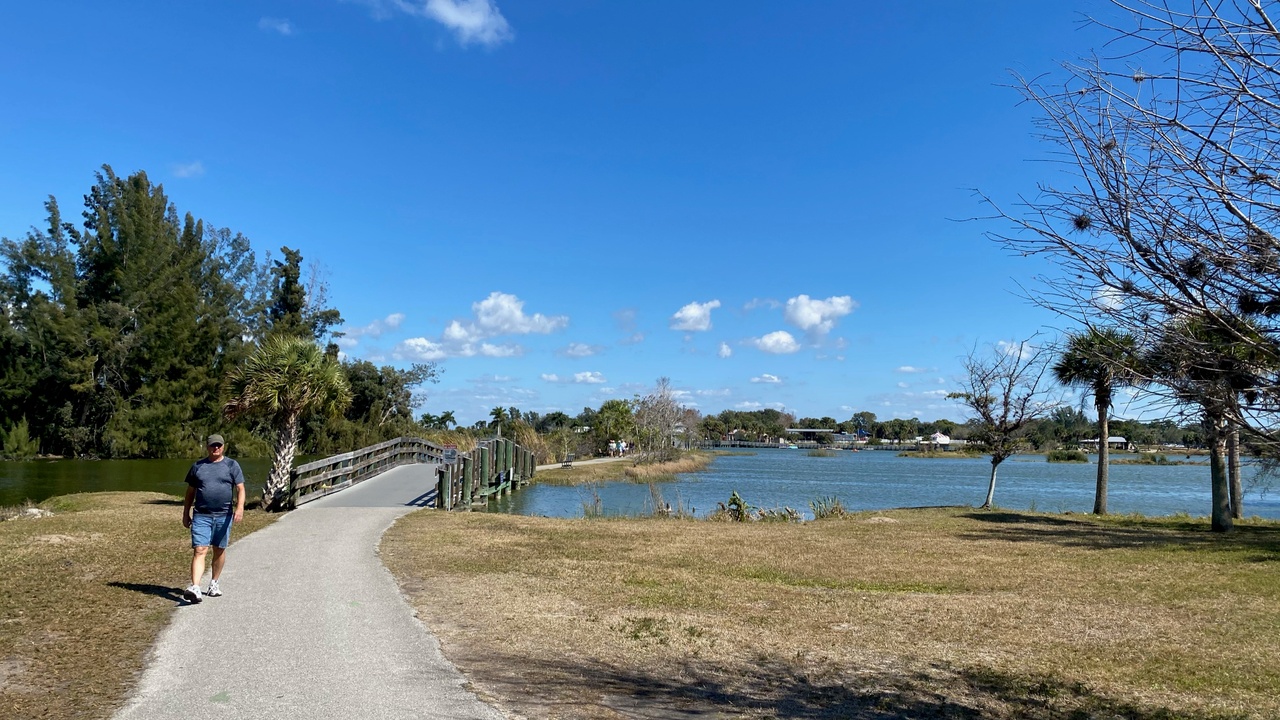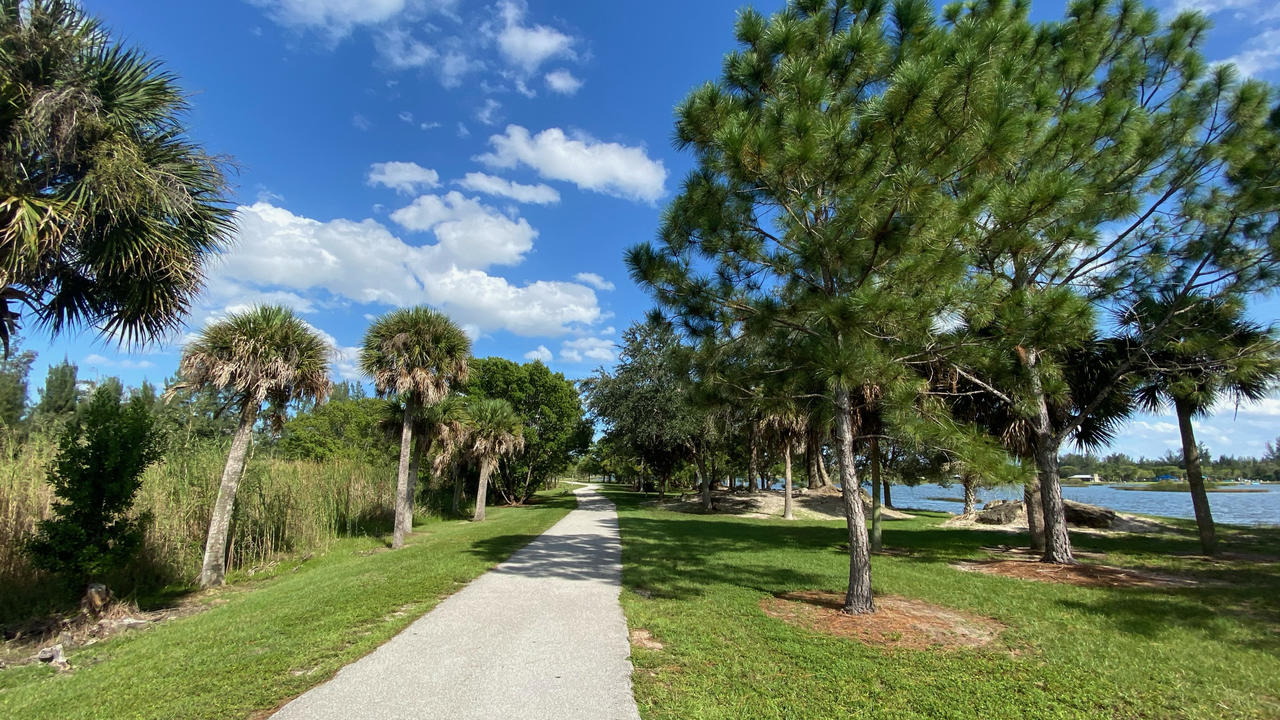Good Exercise Habits - Build on the Basics

Enjoying a beautiful sunset in Lakes Park, Fort Myers, Florida, after a 2 mile run on a beautiful April Florida evening. Photo courtesy of Charly Caldwell II.
Undeniably, we have had to deal with a lot of changes over the last few year.
Looking forward, it is likely that these changes will resonate for weeks, months or even years, changing the way we operate.
Navigating the lifestyle changes can be difficult and disruptive and keeping up with good habits can fall to the wayside.
Many may even have given up on the idea of trying to exercise at home entirely due to lack of equipment, space, time or motivation.
Some experienced the “quarantine 15”.
Whatever your status, it is especially important during times like these to look after our health and well-being and to consider the role of physical activity in managing various health risks.
Exercise is a mainstay in preventative management of cardiovascular disease, diabetes, and obesity.
Physical activity is also essential for...
Workplace Mental Health Affects Physical Wellbeing

It's important to take time to rest, rejuvenate and recharge - Naples Beach, Florida is a GREAT place to do just that! Photo courtesy of Charly Caldwell II.
On average, most of us spend a third of our lives at work. Making sure that workplaces nourish mental wellbeing seems like a no-brainer.
Although the conversation has started, let’s avoid any confusion by defining mental health and wellbeing.
Per the World Health Organization, mental health is a ‘state of well-being in which every individual realizes his or her own potential, can cope with the normal stresses of life, can work productively and fruitfully, and is able to contribute to her or his community.”
I don’t know about you, but I think that sounds superbly fabulous.
As the shroud of stigma around mental illness gradually starts to lift, we begin to recognize mental wellbeing or positive mental health as more than the absence of mental illness, but rather a state of flourishing mental health.
...
Train Your Brain to Improve Fitness and Performance

Take a walk in beautiful Lakes Park to reflect, connect to source, renew, rejuvenate and train your brain. Photo courtesy of Charly Caldwell II.
Some people think that a strong body is the biggest strongest asset we have.
I beg to differ.
You can have the strongest body, the healthiest heart or the biggest biceps BUT if you don’t have a strong mind, you will fall short every time.
If you want to make positive changes in your life, your fitness and/or take your training to the next level, you need to think about training your brain.
Training the brain does not involve any Jedi mind tricks. It does however require a desire to change, the right beliefs and a solid plan of action.
First, decide what’s holding you back?
Decide what needs to change.
- What about your subconscious is holding you back?
- The idea of success?
- Self-worth or a lack of belief that you deserve to be successful?
- Lack of skills?
- Do you need to learn a new skill to compete at a higher level?
Determine...
Seek a Qualified Professional for Quality Information

Take the extra time to reflect on what's real - do the research & learn. Enjoy & reflect on this beautiful February sunset on Naples Beach. Photo Courtesy of Charly Caldwell II
With so much information available on the Internet and social media, it can be hard to decipher what's real from what’s … not.
Qualified personal trainers hold professional degrees in fitness-related fields, including exercise science and kinesiology, plus years of experience training clients to reach their fitness goals.
When you’re seeking answers, seek out a professional. Don’t be fooled by misinformation.
Get quality information from a qualified professional so you may realize your goals.
MYTH #1: You need to be in the 'fat-burning zone' to burn fat.
You might have heard about the 'fat burning zone' and how you need to run for long durations in this zone to burn fat.
Though there is truth to this, the same desired outcome can be achieved through a...
Pain Free Movement Starts with Good Hip and Spine Stability

Get out and walk, concentrate on your posture, and flow. Take elongated steps, and breath! A beautiful day for a walk in January, in Lakes Park, Fort Myers. Photo Courtesy of Charly Caldwell II
Having adequate mobility and stability is essential for your health and function.
This is especially true when it comes to avoiding injury. When your joint mobility is restricted, your movement is impaired, meaning the risk of injury is increased.
Therefore, you need full mobility when strength training or performing any other form of exercise.
When we are born, we are generally graced with full mobility but as life progresses, our mobility slowly deteriorates due in part to injuries and our lifestyle choices.
A perfect example being sitting for long periods of time.
On the other hand, we are born with no stability. Stability is developed as me mature throughout our childhood and enhanced through exercise and lifestyle choices later in life.
Therefore, placing a large focus...
Ring in the New Year with Better Sleep
Enjoy the mesmerizing waves of Naples Beach (Southwest Florida) as a way to calm your mind, and prepare your body for sleep. Video courtesy of Charly Caldwell II.
Well here’s an oxymoron...
An article about sleeping on New Year’s Eve!
While it may see counterintuitive to talk about sleeping on the one night most of the world doesn’t sleep enough, it’s worth a conversation.
The health costs that arise from sleep deprivation include over $2+ billion spent treating conditions associated with sleep deprivation including:
- sleep apnea,
- narcolepsy,
- restless leg syndrome and
- seizures.
Accidents result in the loss of a further $3.5 billion, and economic inefficiency costs more than $400 billion.
The study titled ‘Why sleep matters..’ as reported in Fortune magazine determined that lack of sleep or poor sleep habits is costing the US workforce approximately 411 Billion dollars is lost productivity and 1.2 million work days annually.
It is...
Is your phone, tablet and laptop putting an ‘iHunch’ your posture?

There is no denying that we live in the ‘technological era’.
Consumers are constantly on the go, looking for new and improved ways to maximize time, energy and enjoyment. Whether this means streaming music, capturing that ‘award-winning’ picture, engaging in the latest Twitter debate, or texting friends/family, it’s all done on technological devices of one sort or another. In fact, most of you reading this article will own at least one technological device.
Take a second to add up the number of hours each day that you spend on your device. Is it one, two, five, or even ten?
That calculation isn’t of any real benefit for this discussion, but your posture is, and the awkward positions we find ourselves in while using these devices will not help.
I would like to introduce to you the term the ‘iHunch’.
iHunch is a term used to describe the common spinal problem at the level of the cervicothoracic junction (CT junction)...
The Humble Resistance Band, Unassuming Yet So Versatile

Example resistance bands, easily found on Amazon or anywhere workout equipment can be purchased.
Whether you're rehabilitating a specific muscle group or just want to get more out of your workout, don't overlook the humble resistance band.
Resistance bands are an extremely common piece of equipment that you can find in most gyms, but many people are unsure of what to do with them.
Just like the weights around the gym, resistance bands come in all different sizes and intensities to suit you and your training.
Resistance bands are great for people in all stages of their training needs.
They can be great for beginners learning how to move, people recovering from injuries, elite athletes needing help engaging certain muscles or simply people wanting an extra burn.
Read on to learn some of the top benefits and practical applications of resistance bands.
Resistance Bands for Rehabilitation
A lot of clients still in the rehabilitation phase of their training can benefit from using...
Exercise and the Science of Metabolism

Join us for a beautiful fall morning run in gorgeous Fort Myers, Florida...
Regardless the kind of exercise or activity you do, you will always require some sort of energy to complete the task at hand.
Without our metabolic processes’ we would not be able to convert the food we eat into usable fuel.
Around 60% of the energy we get from our food is used for keeping the body alive and its organs working correctly. The other 40% can be used for walking, exercise and other daily activities.
If the energy does not get used, a big part of it will be stored in the body as fat.
Extensive dieting reduces our metabolic rate, cuts down your energy levels and is not the best way to lose weight.
Exercise can help to increase your resting metabolic rate, meaning you’ll start to burn more calories even while your body is in its resting mode.
High intensity exercise or vigorous resistance training can cause you to burn calories for hours after the training has been completed.
This is...
Delayed muscle soreness or injury? How do you know?

A beautiful autumn day in Fort Myers, Florida, perfect walking or running weather! Join the Geared Up family on our next run, find out how here.
For a lot of us, pain in the body will come and go, like a headache.
You may have pain for an hour or maybe even a day, but often it will simply go away and you’ll forget about it.
There are many factors and mechanisms that cause pain in the body, and sometimes you may feel it’s not bad enough to do anything about.
The best tip I can give you is you should do something about our pain before it becomes problematic.
But how do you know when?
Delayed onset muscle soreness (D.O.M.S)
As you’ve probably experienced, after training, you can develop delayed onset muscle soreness (D.O.M.S).
This pain and stiffness can be felt in the muscle for between 24 to 72 hours, days after strenuous or unaccustomed exercise.
It is caused by damage to the muscle during the eccentric (lengthening) part of the contraction and the soreness...

